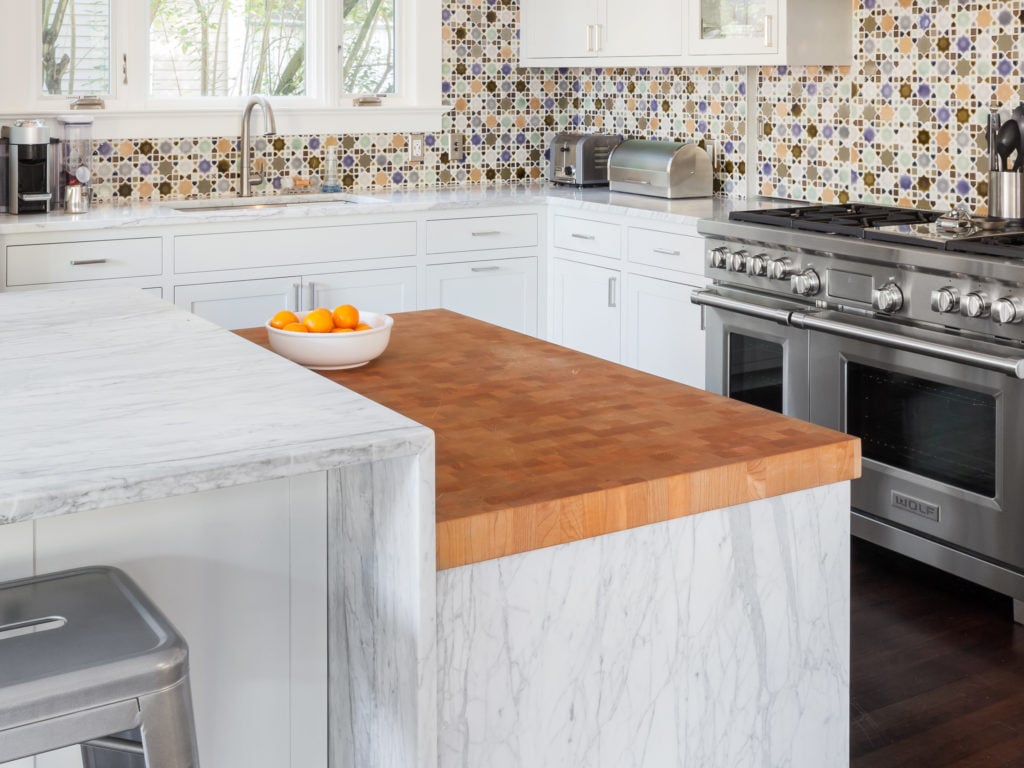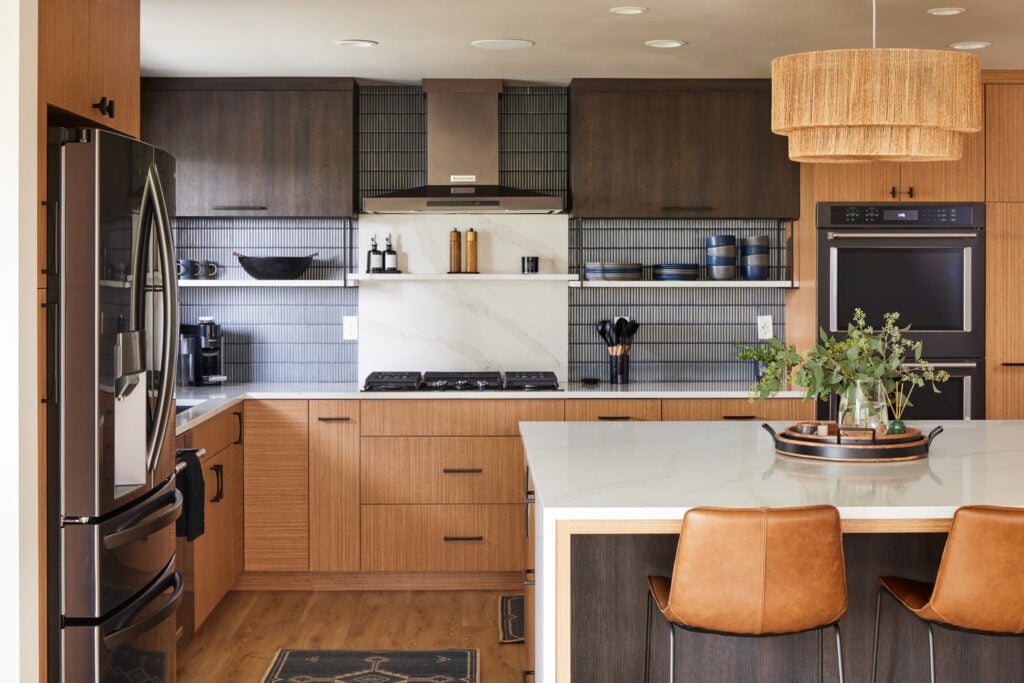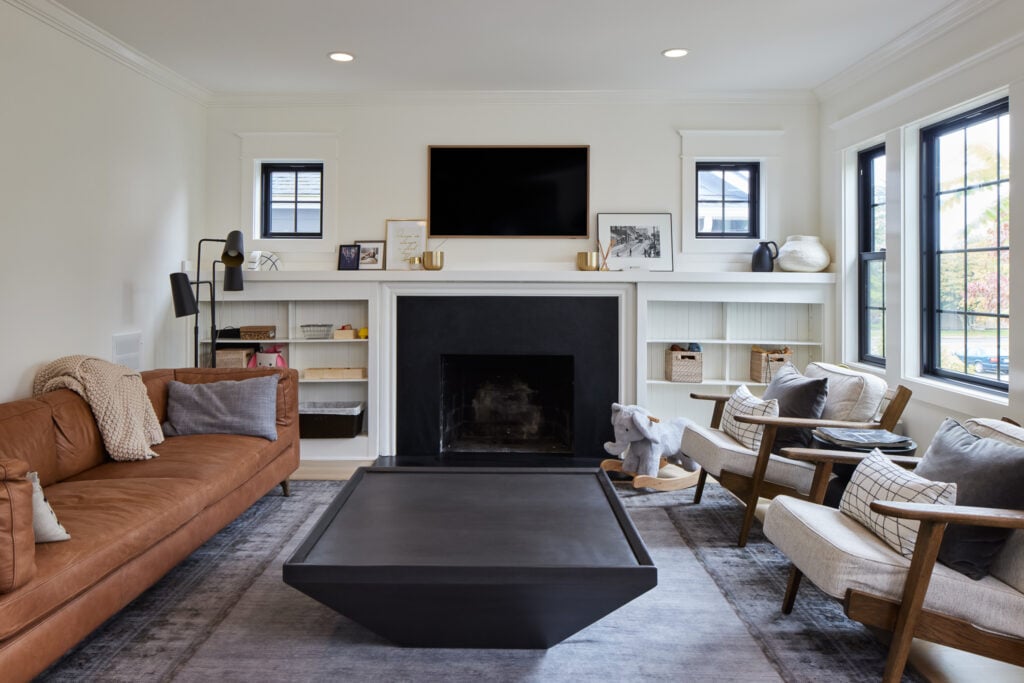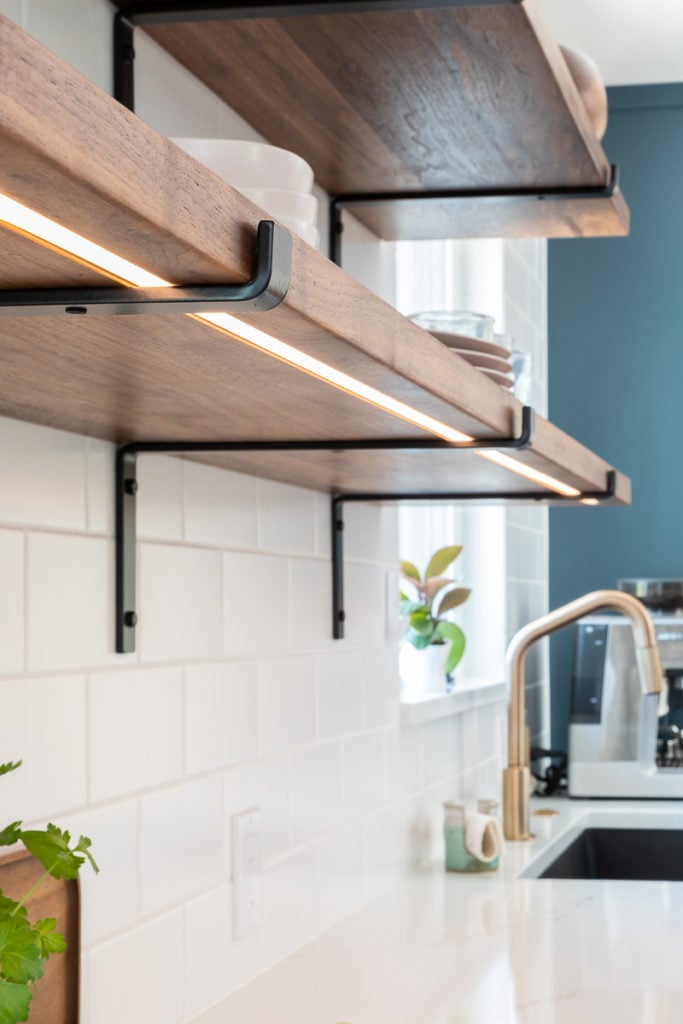Butcher block countertops are a trendy-yet-timeless option that look stunning when used within most design styles. Wood countertops introduce a level of warmth that’s hard to duplicate with classic stone countertops and add an earthy element to modern spaces. They are also one of the most budget-friendly kitchen remodeling choices out there. Even with all these positives, butcher block countertops aren’t for everyone. Here’s how to decide if butcher block countertops are right for your home.
Pro: Butcher Block Is Available in Numerous Styles.
When constructing a butcher block countertop pattern, the woodworker must decide which grain of the wood strips (also called rails) will face upward: the face, edge, or end grain. Each creates a different, unique look.
End-Grain Butcher Block ($$$)
End grain butcher block is a series of repeating squares, which can sometimes look like a checkboard. End grain is loved because it’s the most durable and will not show knife marks as easily as other butcher block styles due to it’s busy character. It’s often the most expensive of the butcher block styles.
Edge-Grain Butcher Block ($$)
Another butcher block countertop style is edge-grain, which looks like long rows of wood because the pieces are laid on their sides. An edge grain cutting board is a great choice if you want less upkeep because they don’t require quite as much oil treatment since the grains of the wood are not exposed.
Face-Grain Butcher Block ($)
Lastly, face-grain is the style which looks the most like a solid piece of wood. The wider, flat surface of the wood is used, allowing uninterrupted wood grain to show. While this option is the least resistant to knife marks, it is makes for a great modern look.
The photos below show the most popular style we install, which is edge-grain countertops.
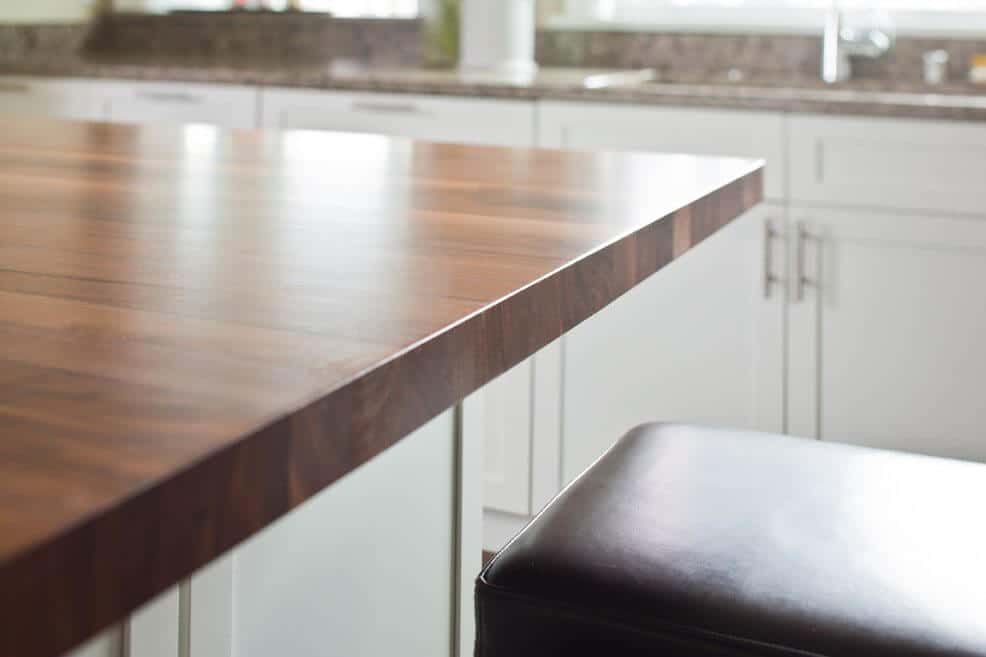
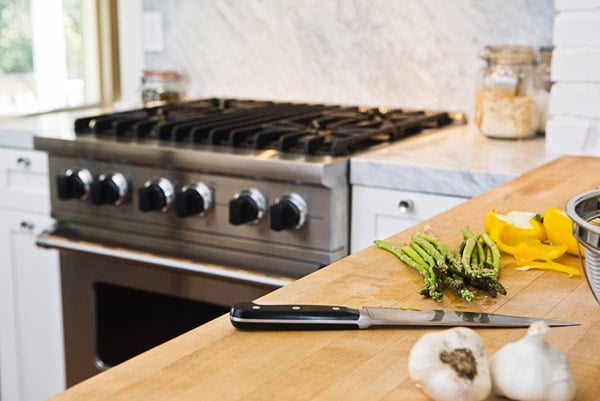
Hardwood sources used to make butcher block countertops include cherry, birch, pine, mahogany, beech, maple, oak, and bamboo. The price can fluctuate dramatically depending on which wood you choose, the thickness and length.
All these potential wood and grain combinations offer endless design possibilities, allowing you to choose a pattern that seamlessly incorporates with your color scheme and décor. For example, oak conjures up a classic, colonial vibe, while blonde bamboo is a popular choice for today’s modern, sustainable homes.
Con: Butcher Block Countertops Dent Easily.
Butcher block is a softer material than stone, glass or granite, making it more susceptible to everyday wear-and-tear. Dents, dings and scratches are unavoidable and expected. Some homeowners love the “lived in” vibe of a heavily used wood countertop, while others prefer to keep the wood looking like new. If you choose to use your butcher block countertops as a cutting board, the lifespan of its once-beautiful surface will certainly be reduced dramatically.
Pro: It’s An Affordable Countertop Material.
At an average cost of $20 to $60 per square foot, butcher block countertops will typically cost less than other popular materials like quartz, stainless steel, marble, glass and soapstone. Repurposing reclaimed wood into countertops is one way to cut even more cost, but will require more time on labor. Either way, having more money leftover in your kitchen remodeling budget will allow you to purchase those new stainless-steel appliances that you’ve had your eye on for months!
Con: Wood Countertops Are Not Moisture Resistant.
Because most natural wood—at least those species found in North America—reacts to moisture, using wood when remodeling a bathroom is rarely a good idea. Once exposed to water, wood kitchen counters can also stain, grow mold, attract germs and even warp.

Unlike non-porous countertop materials, butcher block must either be sealed immediately (like the photo above) following installation or maintained on a regular basis with food-safe mineral oil. It is a high maintenance material. Butcher block countertops care includes regularly treating with a non-toxic sealant like walnut oil or mineral oil whenever they start to feel dry. They may also require periodic light sanding to keep the color uniform, since any water left on the counter can cause a stain.
Pro: Cleaning Butcher Block Counters Is a Breeze!
Although acid-based cleaners can erode quartz countertops, and soap can spot or streak stainless steel or glass countertops, those cleaning products won’t cause damage or unsightly marks if they come in contact with butcher block.
In fact, you’ll rarely need a heavy cleaner, since the most common method of cleaning and disinfection is with ingredients you most likely have in your pantry! The simplest butcher block countertop care is wiping them down with a mixture of diluted vinegar in water—easy and non-toxic! There are many tutorials for butcher block care available online.
Con: They React to Temperature Fluctuations.
Not only does wood react to moisture, but it also expands or contracts along with temperature fluctuations. Expect your countertops to swell by roughly one-eighth of an inch in summer, followed by an equal amount of shrinkage during the winter months. If you install butcherblock countertops without leaving enough room along the perimeter, it can cause your counters to start cracking or warping. Professional contractors will know this trick of the trade, but DIYers sometimes all victim to this butcher block quirk.
Pro: Butcher Block Will Last for 20+ Years.
When installed, cleaned and sealed properly, the surface of your butcher block counters should last at least two decades—which is five to ten years longer than your average laminate countertops, but much less than something like quartz which could last a lifetime. The different being, butcherblock requires less manufacturing and is generally better for the environment. The two decades of longevity that wood counters provide are on par with marble countertops, which makes them a highly cost-effective alternative for your custom kitchen makeover!
The Pros of Choosing the Right Remodeling Contractor in Seattle
Finding the best contractor for your kitchen remodeling project is important. Whether you want a high-end, luxury kitchen, or simple, minimalistic space, find a contractor that specializes in the style you’re looking for. Do your research, ask for references, get written estimates, and check online reviews posted on Yelp, Google or Houzz.
At Model Remodel we are design-build contractors who’ve built a solid reputation in the Seattle area by transforming outdated homes into functional, luxurious living spaces with our conception-to-completion home remodeling solutions. Our talented designers are well-versed in many different interior design styles, and can help craft a custom space to your exact needs. To get started bringing your next home improvement project to life, tell us more about your objectives today through our online form!

